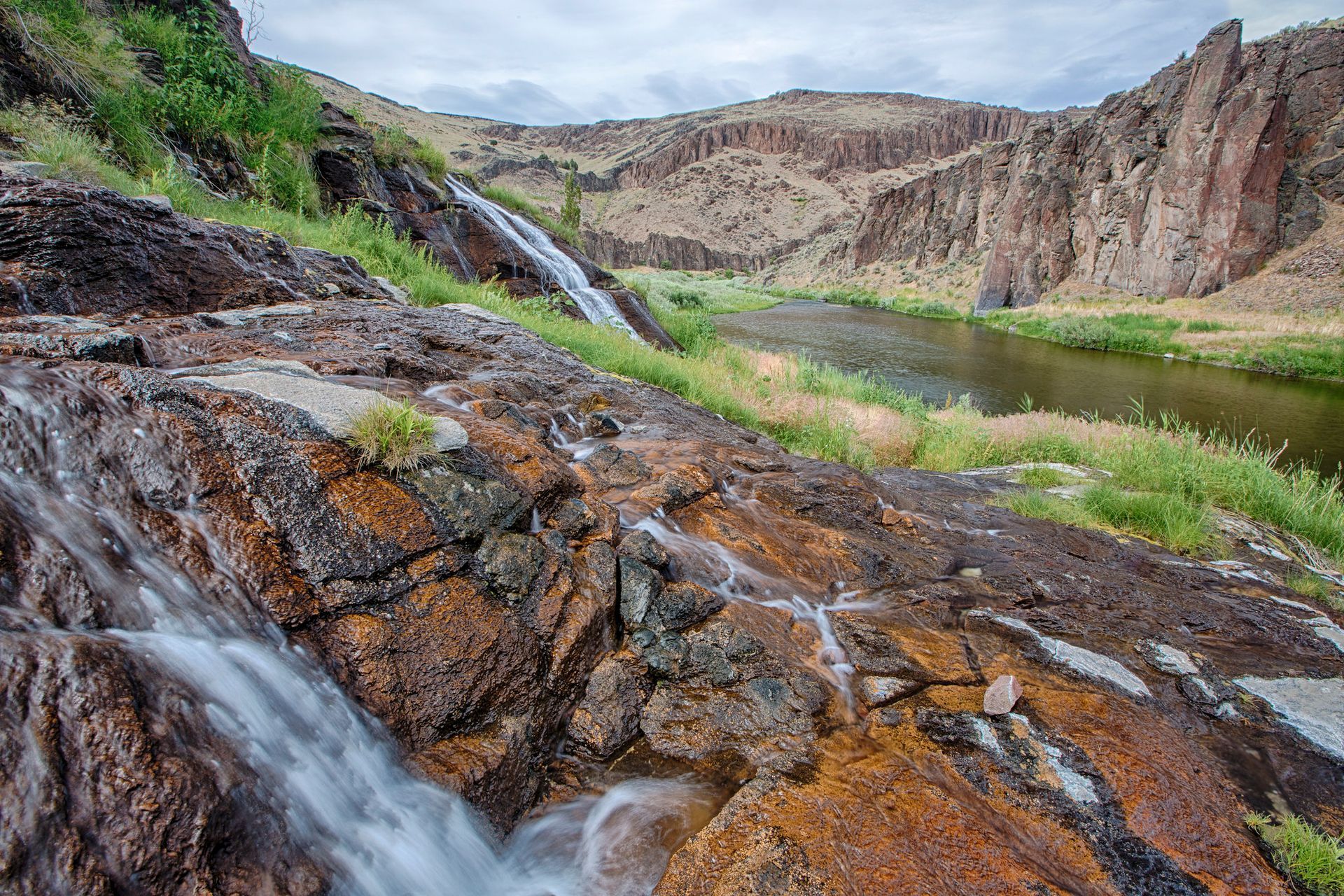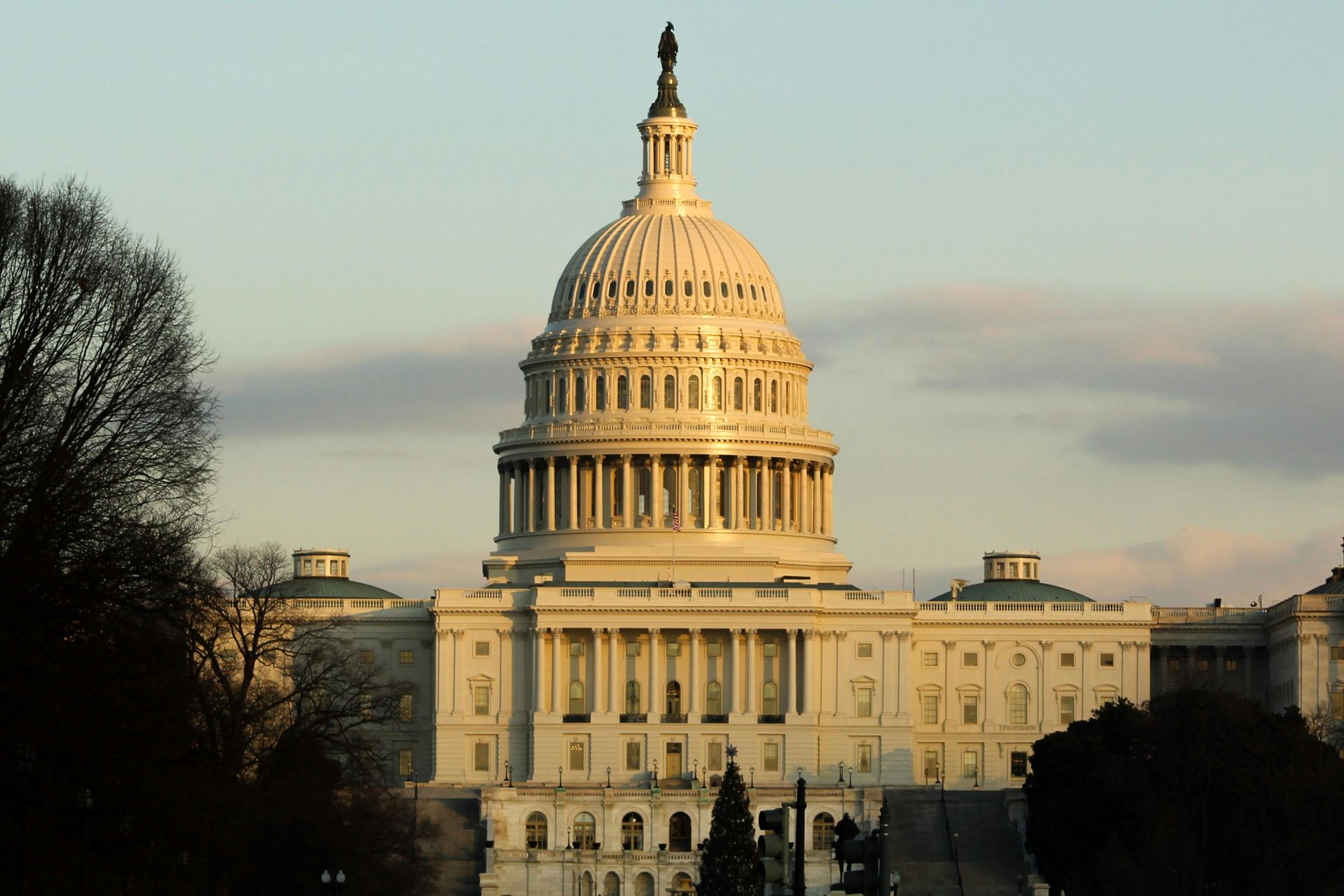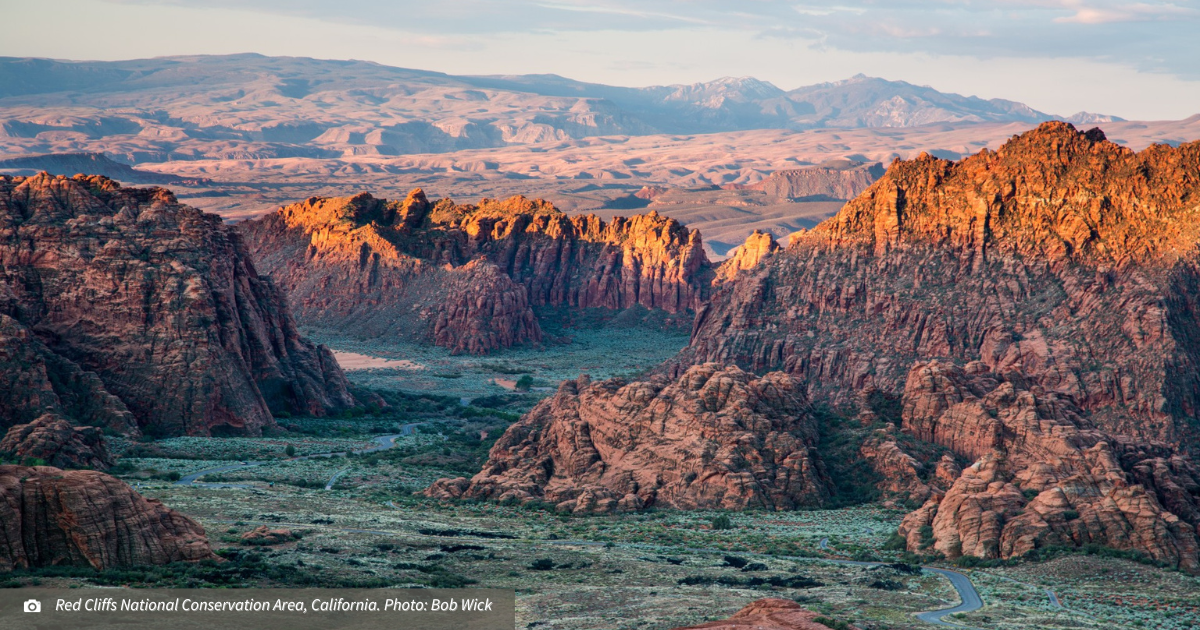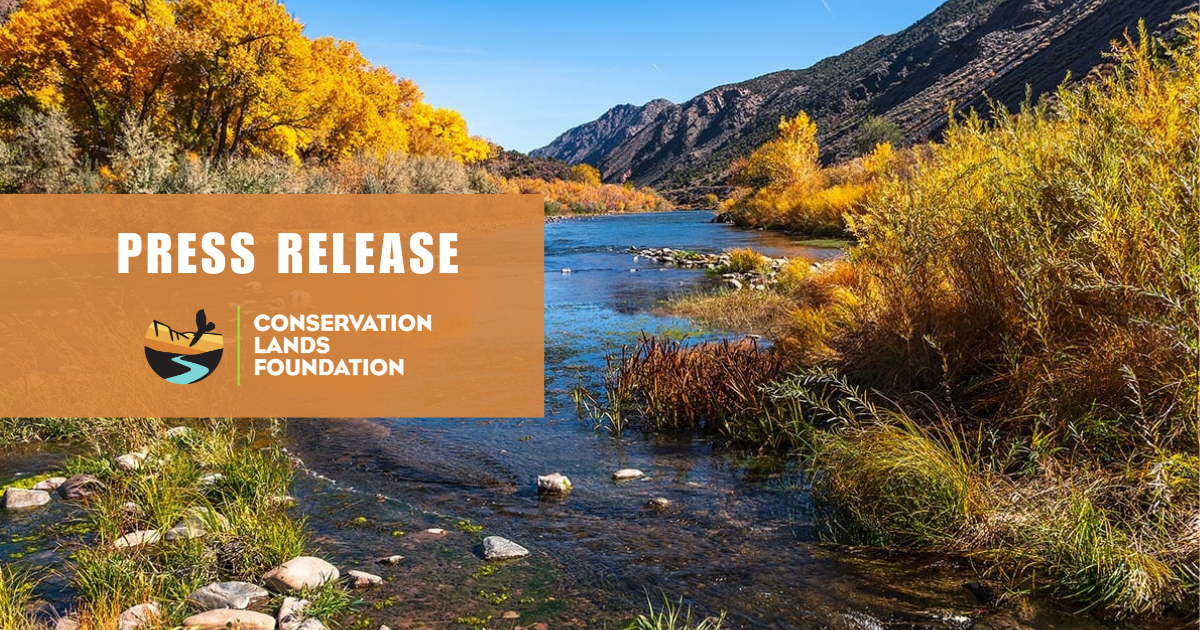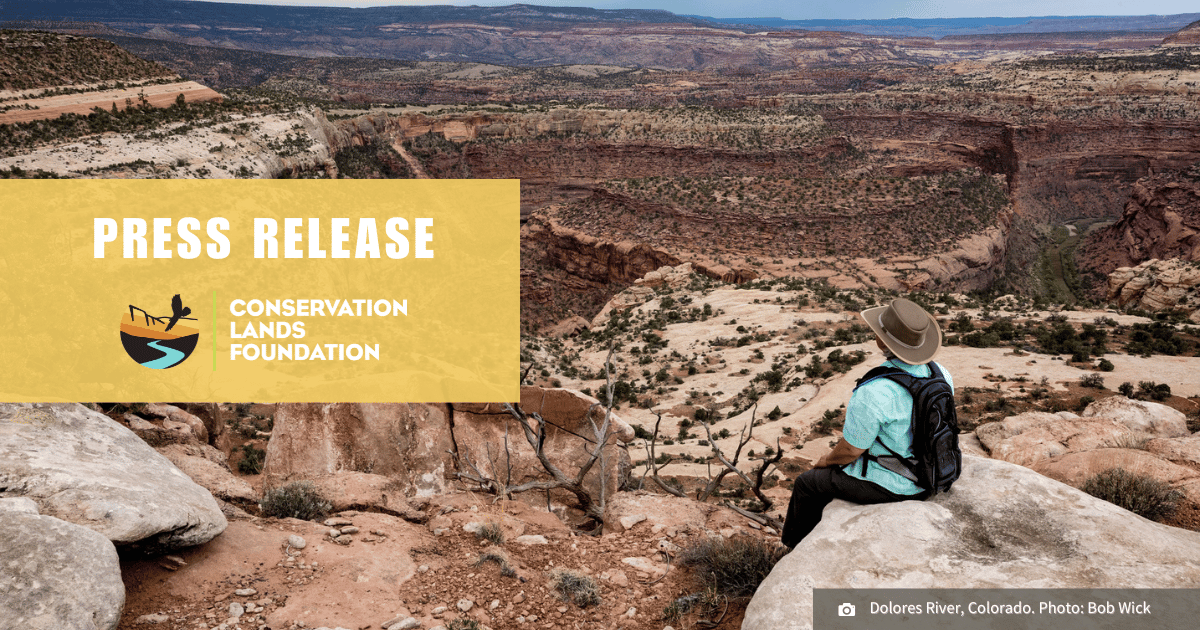New Mexico Communities and Environmental Groups Applaud Biden Administration for Protecting Lands Surrounding Chaco Canyon
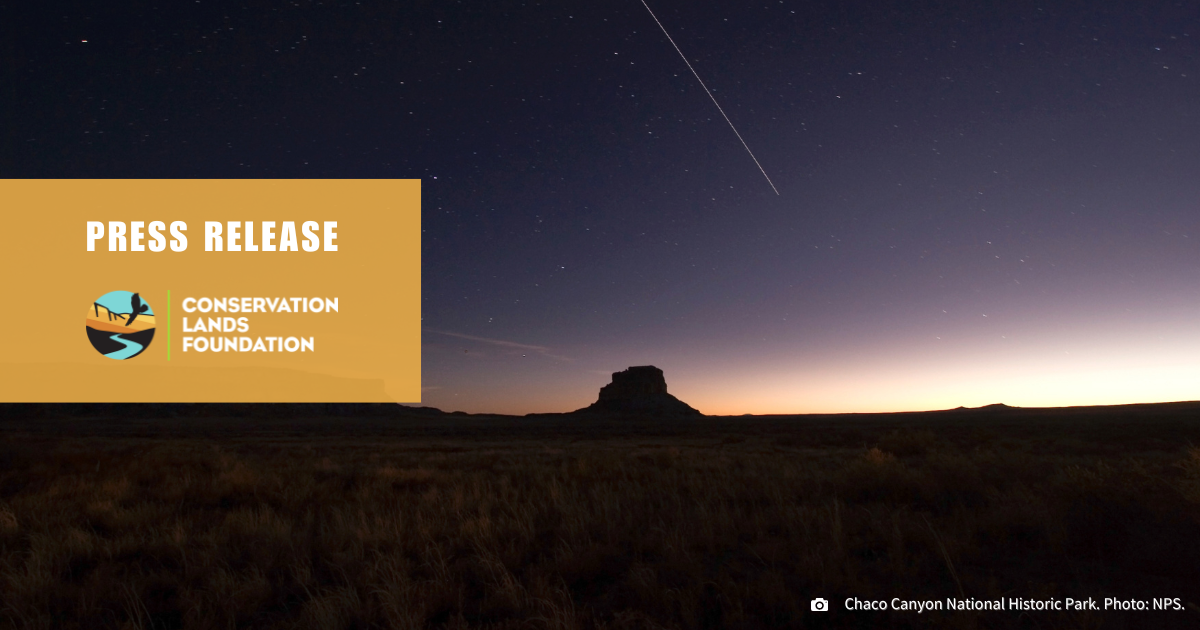
Albuquerque, NM – New Mexicans express deep gratitude toward the Department of Interior (DOI) for approving a 20-year mineral withdrawal of federal lands and minerals within a 10-mile protection zone around Chaco Culture National Historical Park. Secretary of the Interior Deb Haaland made this withdrawal official after holding multiple public meetings and seeking comments from the public throughout 2022, during which time people from across the state and country spoke up in support of protecting the Greater Chaco Landscape. The withdrawal prohibits new oil and gas leasing on roughly 336,400 acres of public lands surrounding the park.

Secretary Haaland withdraws public lands surrounding Chaco Culture National Historical Park from future leasing, mining claims.
Photo: Department of the Interior
The action by the Biden administration supports efforts in Congress to enact lasting protection. On May 3, 2023, New Mexico’s full congressional delegation, consisting of Senators Ben Ray Luján and Martin Heinrich and Representatives Teresa Leger Fernández, Melanie Stansbury, and Gabe Vasquez, reintroduced the Chaco Cultural Heritage Area Protection Act, which would prevent new oil and gas leasing on the federal lands encompassed by the administrative withdrawal. Originally introduced in 2019 and passed by the U.S. House of Representatives, the legislation would protect thousands of significant cultural properties and sites. While New Mexicans await passage of this legislation, the finalized 20-year withdrawal provides interim safeguards against continued threats to natural and cultural resources and public health in the region.
Last June, following the initial comment period, the All Pueblo Council of Governors traveled to Washington, DC urging the Biden administration to protect Chaco Canyon. In a press release, today, they stated, “The All Pueblo Council of Governors expresses our utmost gratitude for this momentous decision. Secretary Haaland and her leadership and staff within the Bureau of Land Management and the Bureau of Indian Affairs conducted a thorough and careful analysis before completing this withdrawal, listening to and elevating tribal voices throughout the process. Their work will leave an invaluable mark on this sacred landscape.” Additionally, the BLM received over 130,000 public comments in support of the 10-mile withdrawal during the two comment periods held in 2022.
The Greater Chaco Landscape includes Chaco Culture National Historical Park and thousands of ancient villages, roads, and shrines that were built by the ancestors of the Pueblos nations, which emerged and flourished in Chaco Canyon between 850 and 1250 A.D. Chaco Canyon has also been designated as a “World Heritage Site,” as the culture and heritage of the Indigenous peoples of the American Southwest are inextricably linked to lasting protections for the Greater Chaco Landscape.
Over the years, reckless drilling has caused significant harm to the health of Indigenous and other local communities, lifeways, air quality, and cultural values in the landscape surrounding Chaco Culture National Historical Park. Oil and gas wells, roads, pipelines, and other infrastructure have destroyed significant cultural sites and transformed others into industrial parks. To allow more drilling in this area would completely disregard the calls from the Pueblos, Tribes, and other communities who share a deep connection to Chaco Canyon.
The area protected by the withdrawal does not include any private lands or allotments; is historically, spiritually, and ecologically significant to numerous Tribes in the Southwest; and its protection is critical.
Below are several statements detailing what this broad support for increased protections means for Greater Chaco as the Department of the Interior has finalized this 20-year withdrawal and Congress considers permanent protections.
"Today, as we come together in celebration of the protection of Chaco Canyon, we bear witness to the strength and resilience of Indigenous communities and their allies, who have stood firm in their commitment to safeguarding this sacred land, said Keegan King, Executive Director of the Native Land Institute. This achievement is not just about preserving a physical space; it's about honoring the living connection between the land and its people, a connection that is fundamental to the continuity of our cultural heritage. And while we take a moment to acknowledge the progress we've made, we know that there is still much work to be done. We stand united in our mission, driven by our dedication to the land and the invaluable legacy it holds. Together, we will ensure that Chaco Canyon and other sacred landscapes continue to thrive for generations to come."
“We are thankful the Biden administration is providing the long-term protections the Greater Chaco Landscape needs, with the Bureau of Land Management finalizing an oil and gas leasing withdrawal within 10 miles of Chaco Culture National Historical Park,” said Paul F. Reed, preservation archaeologist at Archaeology Southwest. “We have pushed for the 10-mile cultural protection zone since 2016 and are pleased with this very important action. Protecting Greater Chaco from more drilling honors the decades-long effort on behalf of Pueblos, Tribes, and communities to protect the ancestral places, landscape, and history of the Pueblo people. The structures, sacred places, and other cultural resources in Chaco Canyon have stood for hundreds of years, and if all of us do our part and act as good stewards, they can stand for hundreds more.”
“We’re incredibly excited to witness the administrative mineral withdrawal of the Greater Chaco Region and celebrate the intentional protection of a space of immeasurable significance to the Puebloan and Diné peoples. We thank Secretary Haaland and the Biden Administration for this meaningful and deliberate step forward in the right direction, said Kacey Hovden, New Mexico Program Manager for Nuestra Tierra Conservation Project. “This movement has been led by and for the Indigenous communities of the Region, and is a culmination of intentional partnerships that we hope our state and federal leaders continue to actively and deliberately foster going forward. The Greater Chaco Region belongs to the Indigenous communities of the Southwest, and it is long due for land management planning to be centered on the voices of the communities this land is sacred to.”
“We thank Secretary Haaland for her leadership in enacting this administrative mineral withdrawal for this one-of-a-kind and sacred place. Greater Chaco constitutes a living cultural landscape to the Puebloan and Diné people. Respect for this alone demands that protections be put in place,” said Mark Allison, Executive Director of New Mexico Wild. “Greater Chaco is also important for its night skies, paleontology, remnant wildness, natural beauty, and wildlife habitat. Prohibiting new leasing is critical to combating climate change and improving air quality and public health. New Mexico Wild is proud to stand in solidarity with Pueblo leadership in celebrating this crucial step toward providing the Greater Chaco Landscape the protections that it deserves.”
The Greater Chaco Landscape offers an irreplaceable window into the region’s history and continues to provide for contemporary indigenous cultures. Conservation Lands Foundation stands with the Pueblos of New Mexico and the American Southwest in strong support of safeguarding these sacred lands from future Oil and Gas development,” said Romir Lahiri, New Mexico associate program director for the Conservation Lands Foundation. “We applaud President Biden and Secretary Haaland for taking tangible actions to protect this landscape by enacting this important Mineral Withdrawal.”
“This is an exciting day for New Mexicans and all Americans who have voiced support for preserving the greater Chaco Canyon area. Protecting this unique treasure from oil and gas drilling is the right decision,” said Ellen Montgomery, public lands campaign director with Environment New Mexico and Environment America. “Drilling would disturb elk, bobcats, badgers and more than 100 bird species that live in and around the canyon. Thanks to Interior Secretary Deb Haaland, this area is safe for the next 20 years. Now, Congress must act to protect this area forever.”
“NPCA has seen overwhelming support from our members and supporters across New Mexico and beyond for a 20-year ban on new oil and gas leasing on federal lands. We’re grateful to join the longstanding effort led by Pueblo and Diné organizers and leaders along with fellow community, conservation and historic preservation allies. This withdrawal is an important step toward permanent solutions for the broader extended landscape. Thanks to Secretary Deb Haaland for protecting the cultural and ecological values of this living cultural landscape,” said Emily Wolf, New Mexico Senior Program Coordinator for the National Parks Conservation Association.
“President Biden and Secretary Haaland’s decision to protect the lands around Chaco Canyon from future oil and gas development will safeguard important wildlife habitat, preserve clean air and water, and conserve more than 2,400 archaeological sites for future generations,” said Andrew Black, public lands field director for the National Wildlife Federation. “We thank the Biden Administration for ensuring that this spectacular landscape will continue to embody the rich history, culture, spirituality, and resilience of Indigenous communities throughout the Southwest and remain a sacred place for Indigenous people today.”
“Today, we stand with the tens of thousands of Indigenous Peoples and others in the Greater Chaco Region and beyond in celebrating a mineral withdrawal to protect this sacred landscape from more drilling,” said Michael Casaus, New Mexico State Director of The Wilderness Society. “This decision is the result of years of Indigenous-led efforts to protect this sacred land, with support from local communities and advocates. We thank President Biden and Secretary Deb Haaland for listening to their demands and safeguarding these culturally significant lands and the communities living here today.”
Additional Background:
The withdrawal will only impact federal surface and subsurface land. It will not impact Navajo and private land that is checkerboarded within the zone, so Tribal members who live in the area will still be able to freely use and develop their land.
Additionally, beyond the ten-mile zone around Chaco Culture National Historical Park there are much broader threats to cultural and natural resources and communities in northwestern New Mexico. Over the past few decades, BLM has leased over 90 percent of federal lands surrounding Chaco Canyon for drilling, and oil and gas companies have drilled more than 37,000 wells in the area and built a sprawling network of roads (15,000 miles) that’s five times greater than the distance from Los Angeles to New York.
